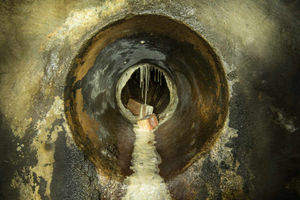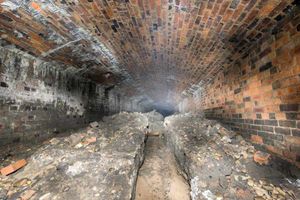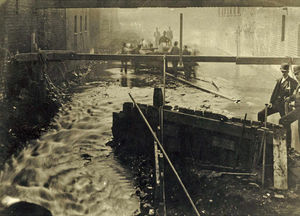Explore the hidden underworld beneath the streets of Birmingham in these stunning pictures
These eerie photos show the hidden Victorian underworld that lies beneath the bustling streets of Birmingham.

The storm drains were built in the 19th century, with pictures documenting repairs to the drains in 1893 using wooden blocks.
They coincided with the era of the notorious Peaky Blinders gang, who ruled the second city.











Photographer Michael Scott, from Birmingham, explored the drains himself after seeing some pictures online.
The 32-year-old said: "It's amazing to go somewhere so central in a city and be totally alone – bar the occasional rat.
"I love how they were constructed in the Victorian era and only a handful of people have seen them.
"It really is a hidden Victorian underworld."
But the drains aren't always so peaceful, and Michael warned of going down them even if it's drizzling outside.
He said: "It is very dangerous and you have to be very careful of the weather.
"Ideally it needs to not have rained at least four days prior to you going, and most importantly it needs to be forecast clear and dry on the day you go down.

"Even then, you need to know where the access ladders are.
"The issue is you are in a storm drain, and the main use of the drain is to take all the rain water away from the streets in the quickest way possible.
"Even if it just drizzles, the water rises and it rises fast."
He added: "Over recent years the heavy rainfall has overcome the drains and flooded roads and housing estates.
"I think there is an improvement scheme looking to improve some of the areas of the network, but the drain is not made to carry sewage."
Professor Carl Chinn MBE, from the University of Birmingham, is among those who is fascinated to see the photos of a previously little seen side of Birmingham's past.
He has written over 20 books on the history of Birmingham, the Black Country and the urban working class in England.
He said: "People always talk about the railways, but this was another major achievement of Victorian engineering.
"It was the result of the public health movement in the late 19th Century, as people became more aware of water-borne diseases and the need for a cleaner water supply.
"Cities like Birmingham started to bring in fresh water, and there is a reason why the Chamberlain memorial in Birmingham is a fountain, because he was pivotal to this."
Joseph Chamberlain was elected town councillor in November 1869, and rose to become Mayor in 1873, during which he tackled fears over Birmingham's water supply, which was described as a danger to public health.
Approximately half of the city's population relied upon well water, but this was polluted by sewage.
Determined to stop the rising death rate from contagious diseases in the poorest parts of the city, in January 1876 Chamberlain forcibly purchased Birmingham's waterworks for a combined sum of £1,350,000, creating Birmingham Corporation Water Department. By this time was representing the city in Parliament, and he declared to a House of Commons Committee that: "We have not the slightest intention of making profit."
He also identified the Elan Valley in Powys, Wales, as a potential source of clean water for the city. An Act of Parliament was passed for the compulsory purchase of the total water catchment area, and an average of 360 million litres of water a day continues to be extracted from the Elan Valley to supply Birmingham, passing through Severn Trent water's treatment works.





